-
 Bitcoin
Bitcoin $116400
-0.36% -
 Ethereum
Ethereum $4033
3.40% -
 XRP
XRP $3.302
-1.26% -
 Tether USDt
Tether USDt $1.000
-0.02% -
 BNB
BNB $796.1
1.67% -
 Solana
Solana $177.8
1.89% -
 USDC
USDC $0.9999
0.00% -
 Dogecoin
Dogecoin $0.2314
4.09% -
 TRON
TRON $0.3381
0.14% -
 Cardano
Cardano $0.7989
1.22% -
 Stellar
Stellar $0.4496
-1.84% -
 Chainlink
Chainlink $20.42
9.42% -
 Hyperliquid
Hyperliquid $41.17
0.88% -
 Sui
Sui $3.914
3.77% -
 Bitcoin Cash
Bitcoin Cash $584.7
1.52% -
 Hedera
Hedera $0.2632
-0.54% -
 Avalanche
Avalanche $24.09
3.40% -
 Ethena USDe
Ethena USDe $1.001
-0.02% -
 Litecoin
Litecoin $123.2
1.33% -
 Toncoin
Toncoin $3.318
-0.04% -
 UNUS SED LEO
UNUS SED LEO $8.984
-0.05% -
 Shiba Inu
Shiba Inu $0.00001323
2.85% -
 Uniswap
Uniswap $10.90
4.41% -
 Polkadot
Polkadot $3.999
3.34% -
 Dai
Dai $1.000
0.01% -
 Cronos
Cronos $0.1630
9.64% -
 Bitget Token
Bitget Token $4.484
0.82% -
 Monero
Monero $272.4
2.44% -
 Pepe
Pepe $0.00001173
6.03% -
 Aave
Aave $290.8
2.88%
What does the rebound of CCI from an extreme low represent? How to judge the buying point after breaking through -100?
When CCI rebounds from extreme lows below -200, it signals potential buying opportunities as market sentiment shifts; watch for confirmation signals to optimize entry points.
Jun 02, 2025 at 01:22 pm
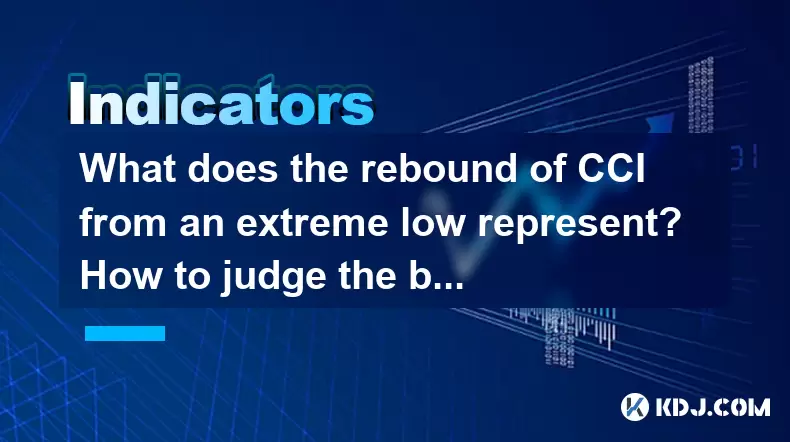
The Commodity Channel Index (CCI) is a versatile indicator used by traders to identify potential trend reversals and extreme conditions in the market. When the CCI rebounds from an extreme low, it can signal a significant shift in market sentiment and potentially indicate a buying opportunity. Understanding the implications of such a rebound and how to identify the optimal buying point after the CCI breaks through -100 can be crucial for traders looking to capitalize on these movements.
Understanding the CCI and Extreme Lows
The CCI is an oscillator that measures the difference between a security's price change and its average price change. High values indicate that prices are well above their average, while low values indicate that prices are well below their average. The CCI typically oscillates between -100 and +100. When the CCI falls below -100, it is considered to be in an oversold condition, suggesting that the asset may be undervalued and due for a price correction.
An extreme low in the CCI, often considered to be below -200 or -300, signifies an even more severe oversold condition. A rebound from such an extreme low can be a strong indication that the selling pressure has exhausted and that a reversal may be imminent. This rebound is significant because it suggests that the market sentiment is shifting from bearish to potentially bullish.
The Significance of a Rebound from an Extreme Low
When the CCI rebounds from an extreme low, it signals that the downward momentum is weakening. This can be interpreted as a sign that the market is reaching a point of capitulation, where sellers are no longer willing to push the price lower. The rebound itself is a critical moment because it can indicate the beginning of a new upward trend.
Traders often look for additional confirmation signals to validate the rebound. These can include bullish candlestick patterns, such as hammers or engulfing patterns, or other technical indicators like the Relative Strength Index (RSI) moving out of oversold territory. The combination of these signals can provide a more robust foundation for making trading decisions.
Identifying the Buying Point After Breaking Through -100
Once the CCI breaks through the -100 level after being at an extreme low, it is essential to identify the optimal buying point. This involves closely monitoring the price action and other technical indicators to ensure that the upward momentum is sustainable.
- Watch for the CCI to cross above -100: This is the first sign that the oversold condition is easing. However, it is not enough on its own to confirm a buying opportunity.
- Look for price confirmation: The price should show signs of a reversal, such as moving above a significant support level or breaking out of a downtrend.
- Monitor volume: An increase in trading volume can indicate stronger buying interest and support the validity of the upward move.
- Check other indicators: Use other technical indicators like the Moving Average Convergence Divergence (MACD) or the RSI to confirm the bullish signal. For instance, if the RSI moves above 30 after being in oversold territory, it can add to the bullish case.
Practical Example of Identifying a Buying Point
Let's consider a practical example to illustrate how to identify a buying point after the CCI breaks through -100 from an extreme low.
- Scenario: The CCI of a cryptocurrency has been hovering around -300, indicating an extreme oversold condition. The price has been in a downtrend, but recently, the CCI starts to move upwards.
- Step 1: The CCI breaks through -100, signaling that the oversold condition is easing. This is the first sign to watch for.
- Step 2: The price action shows a bullish reversal pattern, such as a hammer candlestick, at a significant support level. This adds to the bullish case.
- Step 3: Trading volume increases, indicating stronger buying interest and supporting the upward move.
- Step 4: The RSI moves above 30, confirming that the cryptocurrency is no longer in oversold territory.
In this scenario, the combination of the CCI breaking through -100, a bullish price reversal, increased volume, and confirmation from the RSI would provide a strong case for entering a long position.
Risk Management and Setting Stop-Losses
When entering a position based on the CCI rebound and breakthrough, risk management is crucial. Setting appropriate stop-losses can help protect against potential losses if the market does not move as expected.
- Determine the stop-loss level: Place the stop-loss just below the recent low or a significant support level. This helps to limit potential losses if the price continues to decline.
- Adjust the stop-loss: As the price moves in your favor, consider adjusting the stop-loss to lock in profits and minimize risk.
- Use position sizing: Determine the size of your position based on your risk tolerance and the distance to the stop-loss level. This ensures that you are not risking more than you can afford to lose.
Using the CCI in Conjunction with Other Indicators
While the CCI is a powerful tool on its own, using it in conjunction with other indicators can enhance its effectiveness. Combining the CCI with other technical indicators can provide a more comprehensive view of the market and increase the probability of successful trades.
- MACD: The Moving Average Convergence Divergence (MACD) can help confirm trend changes. A bullish crossover in the MACD after the CCI breaks through -100 can strengthen the case for a long position.
- Bollinger Bands: These can help identify volatility and potential breakouts. If the price breaks above the upper Bollinger Band after the CCI rebounds from an extreme low, it could signal a strong upward move.
- Fibonacci Retracement: This tool can help identify potential support and resistance levels. If the price rebounds from a key Fibonacci level after the CCI breaks through -100, it can provide additional confirmation for a buying opportunity.
Frequently Asked Questions
Q1: Can the CCI be used for short-term trading as well as long-term investing?
A1: Yes, the CCI can be used for both short-term trading and long-term investing. For short-term trading, traders often use shorter time frames and look for quick rebounds from extreme lows. For long-term investing, the CCI can be applied to longer time frames to identify broader market trends and potential reversals.
Q2: What are some common mistakes traders make when using the CCI?
A2: Common mistakes include relying solely on the CCI without considering other indicators, entering trades too early before confirmation signals, and not using proper risk management. It's essential to use the CCI in conjunction with other tools and to set appropriate stop-losses to manage risk effectively.
Q3: How can the CCI be used in different market conditions?
A3: In trending markets, the CCI can help identify potential entry and exit points by signaling when the market is overbought or oversold. In ranging markets, the CCI can be used to identify potential reversals at the extremes of the range. Traders should adjust their strategies based on the prevailing market conditions.
Q4: Is the CCI suitable for all types of cryptocurrencies?
A4: Yes, the CCI can be applied to all types of cryptocurrencies. However, the effectiveness of the CCI may vary depending on the liquidity and volatility of the specific cryptocurrency. More liquid and less volatile cryptocurrencies may provide more reliable signals, while highly volatile assets may require additional confirmation from other indicators.
Disclaimer:info@kdj.com
The information provided is not trading advice. kdj.com does not assume any responsibility for any investments made based on the information provided in this article. Cryptocurrencies are highly volatile and it is highly recommended that you invest with caution after thorough research!
If you believe that the content used on this website infringes your copyright, please contact us immediately (info@kdj.com) and we will delete it promptly.
- SHIB Price, Meme Coin Mania, and the 250x Potential Hunt
- 2025-08-09 16:30:13
- SOL, ETFs, and AI: Crypto's Triple Threat Sensation!
- 2025-08-09 17:10:12
- Tokenized Stock on Solana: SOL Price Reacts to Exodus's Bold Move
- 2025-08-09 17:10:12
- Cardano, Mutuum Finance, Millionaires 2025: A New Wave of Crypto Fortunes?
- 2025-08-09 17:50:12
- Meme Coins on Blockchains in 2025: Hype or the Future?
- 2025-08-09 16:50:11
- World Liberty Financial, Public Listing, and WLFI Tokens: A New York Minute on the Trump-Backed Crypto Venture
- 2025-08-09 16:50:11
Related knowledge

What does it mean when the Triple Moving Average (TRIX) turns downward but the price doesn't fall?
Aug 09,2025 at 12:42pm
Understanding the Triple Moving Average (TRIX) IndicatorThe Triple Moving Average, commonly known as TRIX, is a momentum oscillator designed to filter...

What does it mean when the Williams' oscillator repeatedly hits bottoms but fails to rebound?
Aug 09,2025 at 09:28am
Understanding the Williams %R OscillatorThe Williams %R oscillator, developed by Larry Williams, is a momentum indicator used in technical analysis to...
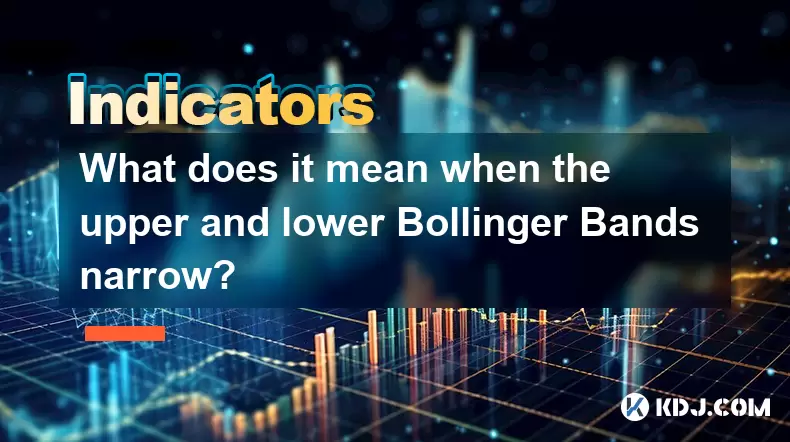
What does it mean when the upper and lower Bollinger Bands narrow?
Aug 09,2025 at 03:00pm
Understanding Bollinger Bands in Cryptocurrency TradingBollinger Bands are a widely used technical analysis tool in the cryptocurrency market, develop...
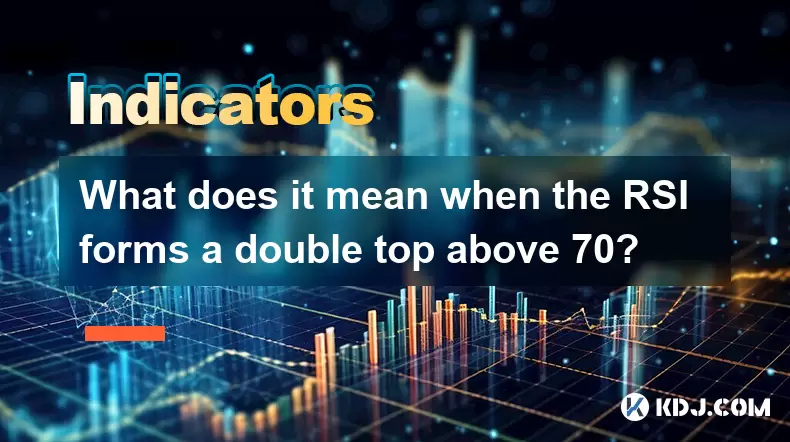
What does it mean when the RSI forms a double top above 70?
Aug 09,2025 at 05:50pm
Understanding the RSI and Overbought ConditionsThe Relative Strength Index (RSI) is a momentum oscillator that measures the speed and change of price ...
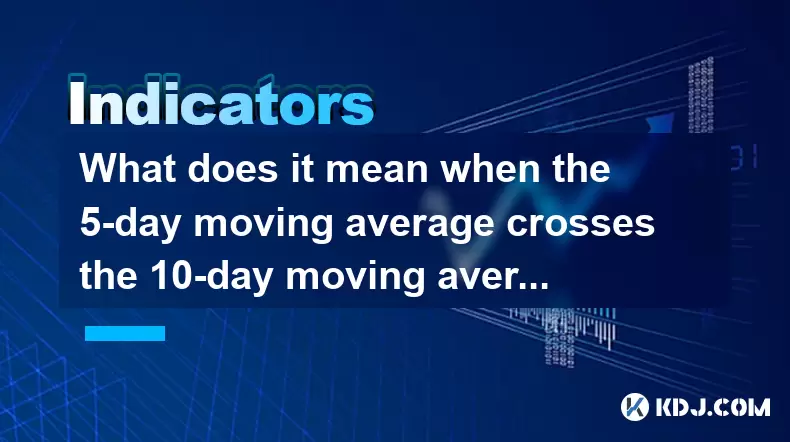
What does it mean when the 5-day moving average crosses the 10-day moving average but the 20-day moving average remains upward?
Aug 09,2025 at 03:35pm
Understanding Moving Averages in Cryptocurrency TradingMoving averages are foundational tools in technical analysis, especially within the cryptocurre...
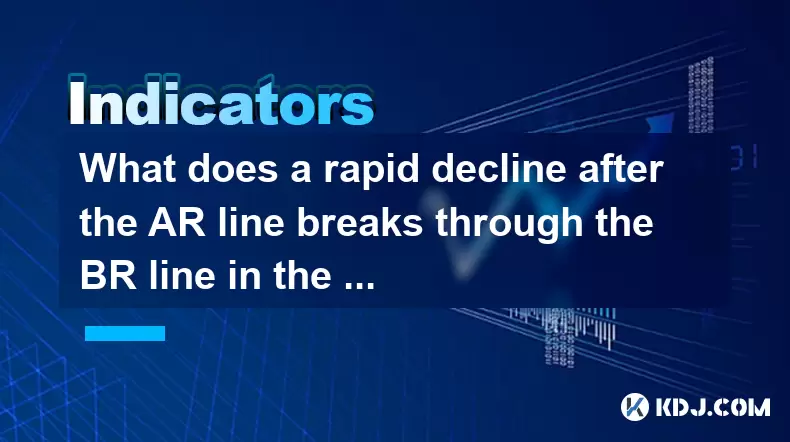
What does a rapid decline after the AR line breaks through the BR line in the ARBR indicator indicate?
Aug 09,2025 at 04:42pm
Understanding the ARBR Indicator ComponentsThe ARBR indicator is a technical analysis tool that combines two oscillators: the AR (Amplitude Ratio) and...

What does it mean when the Triple Moving Average (TRIX) turns downward but the price doesn't fall?
Aug 09,2025 at 12:42pm
Understanding the Triple Moving Average (TRIX) IndicatorThe Triple Moving Average, commonly known as TRIX, is a momentum oscillator designed to filter...

What does it mean when the Williams' oscillator repeatedly hits bottoms but fails to rebound?
Aug 09,2025 at 09:28am
Understanding the Williams %R OscillatorThe Williams %R oscillator, developed by Larry Williams, is a momentum indicator used in technical analysis to...

What does it mean when the upper and lower Bollinger Bands narrow?
Aug 09,2025 at 03:00pm
Understanding Bollinger Bands in Cryptocurrency TradingBollinger Bands are a widely used technical analysis tool in the cryptocurrency market, develop...

What does it mean when the RSI forms a double top above 70?
Aug 09,2025 at 05:50pm
Understanding the RSI and Overbought ConditionsThe Relative Strength Index (RSI) is a momentum oscillator that measures the speed and change of price ...

What does it mean when the 5-day moving average crosses the 10-day moving average but the 20-day moving average remains upward?
Aug 09,2025 at 03:35pm
Understanding Moving Averages in Cryptocurrency TradingMoving averages are foundational tools in technical analysis, especially within the cryptocurre...

What does a rapid decline after the AR line breaks through the BR line in the ARBR indicator indicate?
Aug 09,2025 at 04:42pm
Understanding the ARBR Indicator ComponentsThe ARBR indicator is a technical analysis tool that combines two oscillators: the AR (Amplitude Ratio) and...
See all articles

























































































